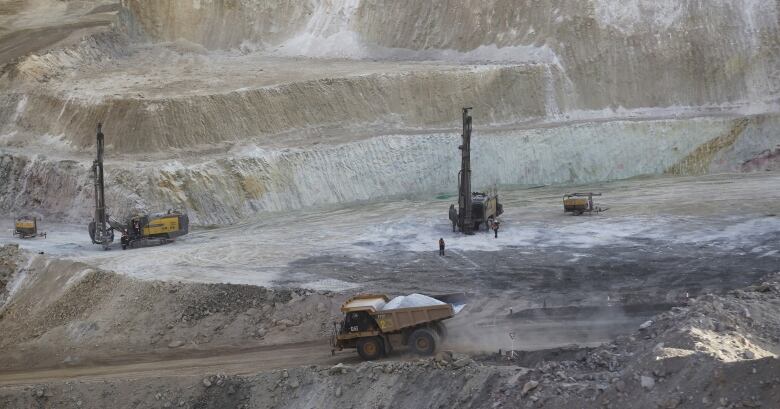Canada and the world ride the long wave to GDP gloom: Don Pittis
After the commodities boom the world may be facing a much more ominous supercycle

Murdered by Stalin as an enemy of communism, Nikolai Kondratieff was never really a hero to capitalism, either.
The Russian economist's idea, widely challenged bymanyconventional Western economists, is that capitalist economies,as well as passingthrough periodicrecessions and booms, face worse declinesevery half-century or so, caused by general industrial overcapacity.
- Canada'sGDP grew0.8% in last 3months of 2015
- China set to lay off millions in coal, steel,other industries
As Canadacontendswith a worldwide glut of oil, commodities and industrial products, it is reasonable to re-examine Kondratieff'stheory andask whether it can tell us anything about what the global economy is experiencingnow.
Creative destruction

That's the idea that in an entrepreneurialeconomy, businesses with old management methods and old technology must collapse to make way for vigorous competitors.
Long-wave theory, as it sometimes called,is used to support many competing economic arguments. But perhaps the one most disliked by market economists who believe in the self-correcting nature of capitalism is the concept of a general economic overcapacity and glut.
For reasons that are disputed, theworld's productive capacity begins to grow to a point where itproducesmore thanpeople want to or can afford to consume.
Saudi Arabia and OPEC are taking theblamefor producing too much oil. For the production of industrial goods from solar panels to steel,many critics see China as the villainof the story.
Zombie march
In an article this week titled The march of the zombies, The Economist directs a pointy finger at China, whose "huge exports of industrial goods are flooding markets everywhere, contributing to deflationary pressures and threatening producers worldwide."
Of course it is easier to blame others. The global oil marketwas relatively stable until U.S. domestic shale production kicked in. In China, U.S. companies fromApple to Walmartare part of the problem.
"It's classic long wave; it's overproduction," said David Knox Barker back in 2010.
"Washington is complaining about Chinese production and the goods they're dumping on our market but 60 percent of those exports out of China are owned by U.S. Fortune 500 companies, by our manufacturing facilities in China."

The stupendousness of China's industrial growth remains hard to comprehend. By 2014 it was producing as much coal as the rest of the world combined. By 2013 it was producing 90 per cent of the world's computers and 80 per cent of the world's air conditioners.
Yesterday an indicator ofChina's industrial production fell to its lowest level since 2011,just asthe government was announcingit was shrinking coal and steel production, eliminating six million jobs. That is about a third of Canada's entire labour force.
At the same time, China is trying to boost growth byallowingits banks to lend morefreely. Of course the danger is that with world interest rates near zero, zombie companies those that Schumpeter says should have died in the destruction phasecontinue to survive inside and outside China, contributing further to overproductionand makingdeflation worse.
Feedback loop
Expanding overcapacity becomes like a giant feedback loop. Countries and companies produce more to counteract fallingprices, pushing prices even lower.If breaking the cycle were easy or painless, it would already have been done. As many have said, it may be that the only way out is a crisis.
The long-wave idea has many doubters. Theories based on history are easily discredited by saying things are different now. Some say Kondratieff'sanalysis read the historical data wrong. Like scientists predicting earthquakes, no one really knows whether the next one will be the big one or just another tremor.

In fact, this may be part of aCanadian economic rebirth. It is certain that when recovery comes, it will come to some places before others.
With so much of our manufacturing industry exported to places like China, we have already passed through the destructionphase.
A retreat from mass production mightsuit us well. Perhaps the next economic wave will bespecialized and individual, local and fresh, based on quality and service.Drugs will be tailored just for you. Energy will be created on your roof.
Micro-manufacturing and 3D printing will make exactly what you want.
And thenmaybe we can give foreignmass production thelong wave goodbye.
Follow Don on Twitter@don_pittis
More analysisby Don Pittis












_(720p).jpg)


 OFFICIAL HD MUSIC VIDEO.jpg)
.jpg)



























































































